Three Months Sailing Japan
Japan, Unusual and Wonderful Cruising
In our last post, Irene had arrived in Okinawa, and after serving a two week quarantine our weary crew of two was free to explore, armed with visas and documentation allowing us to cruise smaller “closed” ports. This classification of ports dates from the 17th century when Japan entered an isolationist period of history (as a reaction to problems encountered with unregulated trade and interaction with Western nations.) Western ships were only allowed to arrive in certain “open” ports. The distinction remains to this day – a visiting foreign yacht is normally only allowed to enter an “open” port, and these ports tend to be larger and industrial ports – fine perhaps as a base for inland travel, but not as scenic or enjoyable or representative of the diversity of coastal Japan as the little “closed” ports.
Luckily if a visiting yacht obtains a certain document on entry, permission is given to visit closed ports. Japan seems to have hundreds (thousands?!) of them, protected by massive and well-engineered breakwaters, and they often are adjacent to charming and scenic villages. In our three months cruising we were never charged a penny to tie up for a night or several in these small harbors. We were only charged moorage at the occasional marina (two in Okinawa and one in Fukuoka) that we visited when we needed to empty garbage and top off our water tanks.
Ginger craved clear water tropical swimming, so we tested our closed port permit immediately after clearing quarantine by heading to a nearby island known for beaches and clear water, Zamami. En route, a joint in our roller furling foil separated – a situation that needed immediate attention. So, directly after mooring, we detached the headstay with the sail still rolled up, dropped the whole heavy bundle on the quay, unrolled the mess and determined we needed a few small parts in order to fix things.
We were introduced to Akira-san and Nanase-san, who understand and help visiting sailors (Island Power.) Ginger and Nanase-san soon had the parts on order. We felt so lucky to have by chance encountered this issue where we could have the space to work on it, as well as meet people who could assist ordering the parts.
We enjoyed a relaxed time – since we were waiting for our parts we had plenty of time and freedom to swim, snorkel, visit restaurants (especially with outdoor dining), socialize, and hike the hills.
Our parts arrived, we
repaired the rig, and briefly considered departing. No, we reasoned, the
weather was still chilly further north, and our hosts quickly gave us
permission to stay another week. That
week went by in the blink of an eye and regretfully we moved on, difficult as it was. It felt like ending
a vacation. With a sunrise departure (YouTube video by Tomonari-san) and a quick day hop back to
Okinawa – Ginowan this time – we arrived in the middle of the city for
filling water tanks and visiting with Akiko-san, Keisuke-san and Kenji-san.
Then we began our trek up the Japanese coastline in earnest.
An overnight sail brought us to our next port of China – not the country but a sleepy little harbor on the island of Okinoerabu. Contrary winds kept us there for a couple of days. Our overall cruising plan was to ride the wind when it blew our way, and to hole up when it blew against us. This plan would save diesel and (after our long passage from Singapore) we had resolved not to ever sail upwind in Japan if we could help it.
Another favorable wind event brought us to Amami island, which has a sheltered inland sound with many beautiful anchorages. We tied up in a nice little basin in the town of Koniya. A typhoon threat delayed us there for a week – no hardship at all. Here also we were boarded and inspected by the Coast Guard who gave us an interesting handout on anchoring in a typhoon, advice tailored more for larger vessels but interesting and informative nevertheless.
The weather changed to allow another jump and this time we got a nice run of several days, ghosting into Teuchi in the dying daylight and last few breaths of wind. Early the next morning enough wind returned to get us up the coast to anchor in Kauwaramachi Bay, Amakusa. We spent a wonderful afternoon and night on the hook in placid water.
The next jump took us to Iojima island, near Nagasaki. We had originally planned to visit Nagasaki proper, but increasing concern about Covid convinced us to try to avoid urban centers. Iojima did not disappoint, with many small quiet roads and trails providing a wonderful way to get the feel of nature.
Departing Iojima at 0230, about an hour before morning twilight, delivered us with perfect timing for tide and current to Hirado, where we tied up to a pontoon in view of a magnificent castle.
 |
| An unusual treat! A fantastic and musical restaurant meal at Pancho's in Hirado. |
 |
| A heated foot bath. Downtown. Free of charge. Wonderful! |
Then Fukuoka, and on to a blur of wonderful places: Oyama, Hamada, Yunotsu, Izumo, Fukui, Fukura, Takaya. We met only a very few sailboats and only one foreign yacht (Canada) in our three months of cruising. It’s no surprise that Covid seems to have affected sailor’s cruising plans.
Our next stop at Ogi on Sado Island is where we tied up next to wooden tubs. (Sadoshima tub boat Info here) Fun to watch!
Also, here we received an email from the village at our next planned stop, an island a day north, requesting us not to come to that island at all because of concerns about Covid. It has been well reported in the news that Japan’s numbers have been climbing, and there is concern about that and the effect the Olympic games might have as well. We rethought our general plan of preferring to stop at small villages and headed for an urban port. The weather cooperated with the possibility of a nonstop sail to Hokkaido, so we set off. Two days later, after a nice fast passage, we arrived at Hakodate and made our way to a central, comfortable, secure inner basin.
 |
| Irene near the center of the image. |
 | |
| This temple is not wood construction, all detail is fireproof concrete replicating wood. |
We got our new (Zoom Sails) staysail, which we regard as essential equipment in the Aleutians and Gulf of Alaska. Mizuno-san kindly received the sail shipped from Sri Lanka.
 |
| Tying to harbor walls requires advanced fendering skills. We've found some "floaters" that have upped our game! |
As we approached our last port in Japan, Kushiro, a thick fog rolled in. We shivered, put on our foulies, retreated to the doghouse, turned on the radar, and considered the fact that this was what weather would be like for the rest of our voyage home to Ballard.
Our time cruising Japan has left us wanting more. Before we arrived, we had heard stories that worried us - about language difficulties, aggressive ship traffic, difficult officialdom, too much fishing and aquaculture, weed and kelp, and vicious tides and currents. As it turned out, our experience was overwhelmingly positive, despite the pandemic – we encountered so many kind and helpful people, beautiful sights, and good sailing conditions. Even the official visits by Coast Guard and customs (11 visits including 2 inspections) were invariably carried out very considerately, more of a cultural exchange than an intrusion. Ship traffic, fog and weather, tidal conditions, and fishing activity were familiar challenges to anyone who has cruised in Alaska and Canada, however Japan has much better winds for sailing. We hope to return some day!












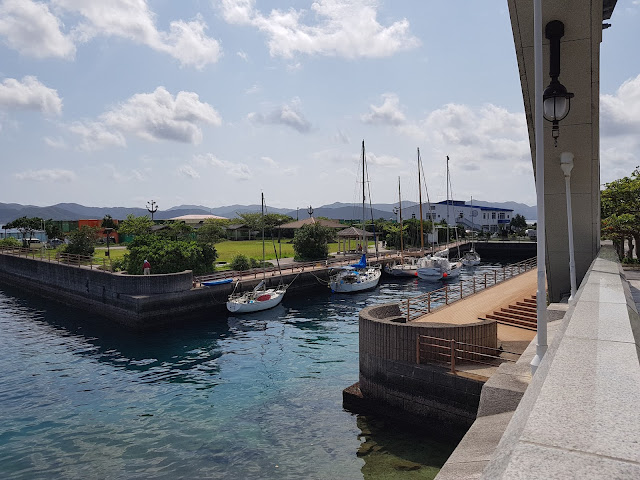












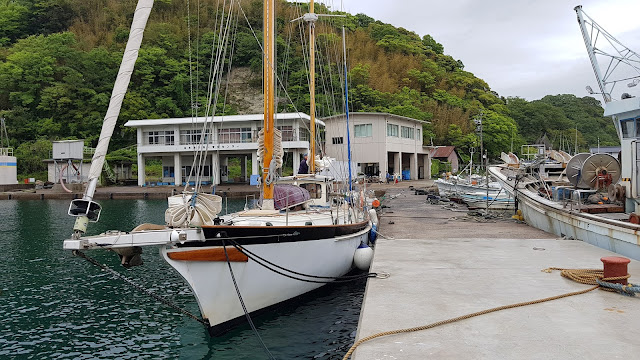


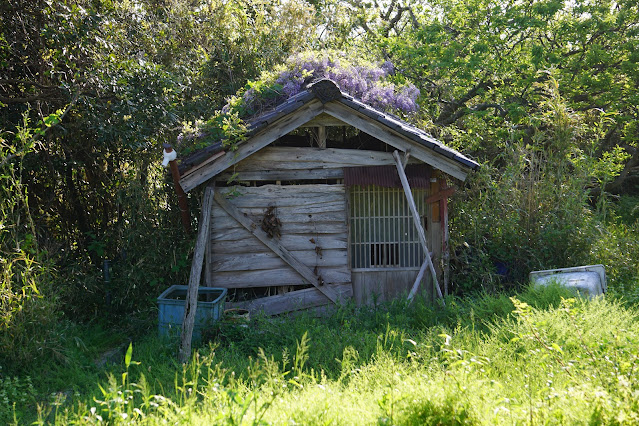














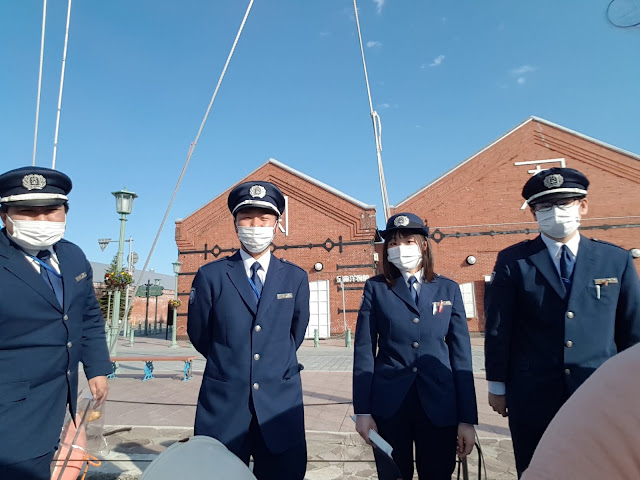

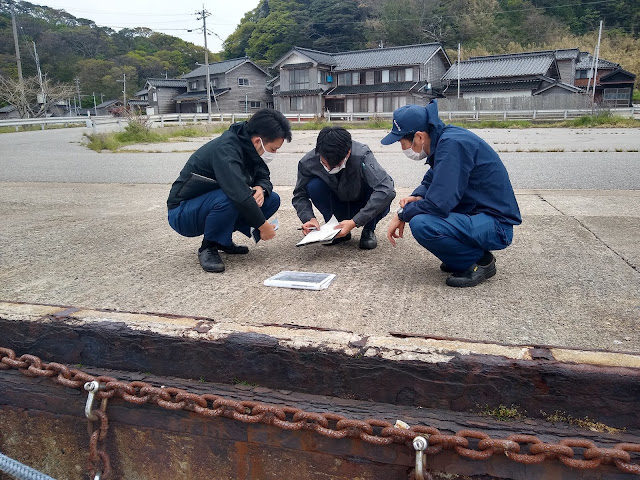




Comments
Post a Comment